Ever perused the ammo at your favorite local gun store and saw various colored tip bullets for sale?
Or maybe you’ve been wondering what that colored tip bullet you found in your grandpa’s gun safe does?

Green, red, black…even purple? What do these color-tipped bullets do? Do you need to keep some in your ammo inventory?
Well, we’re here to clear up any questions you might have about tipped ammunition. We’ll go over each kind and let you know what they do.
By the end, you’ll have a good understanding as to what these cool little rounds are capable of and, maybe, be on your way to picking some up for yourself.
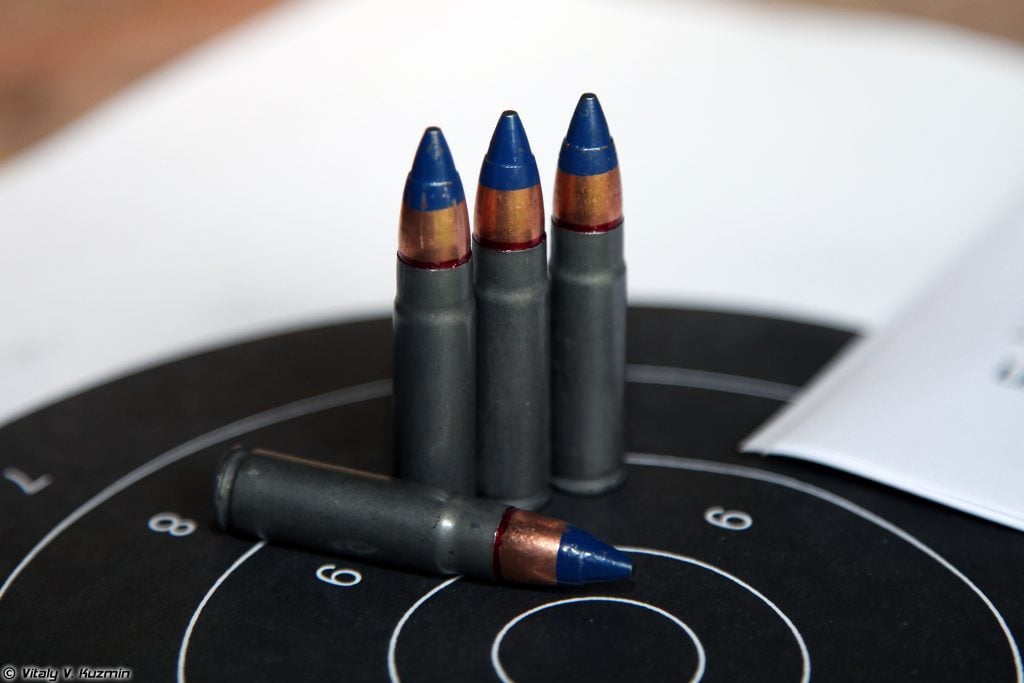
This is what you need to know about colored tip bullets…
Table of Contents
Loading…
Green Tips
Of all the tipped bullets out there, you’ll run across Green Tips the most.
Back in the 1970s, Belgium created the SS109, a bullet designed to become NATO’s standard 5.56mm round of choice.
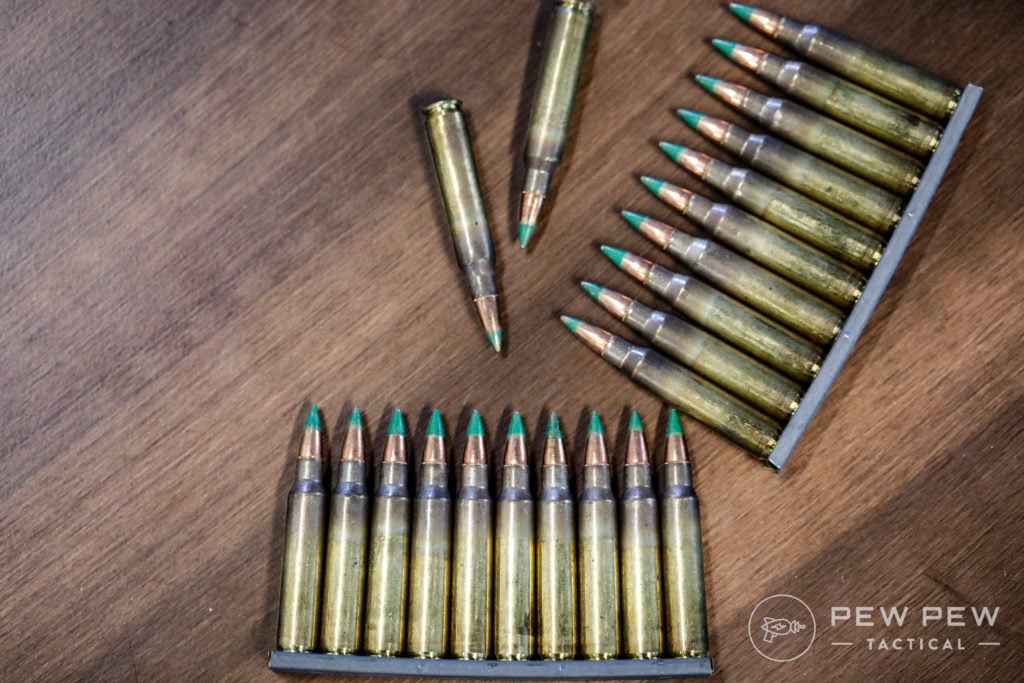
The U.S. military adopted the round as one of its own in the 1980s, using the SS109 as a replacement for its prior 5.56mm round, the M193.
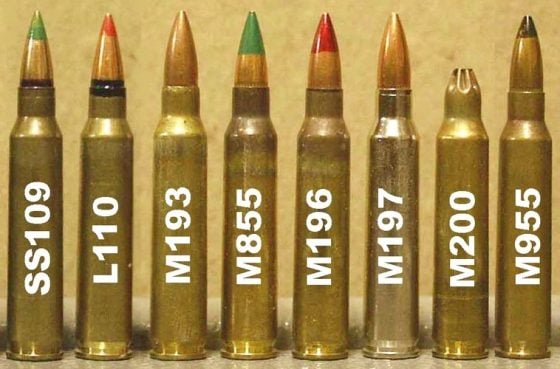
After adopting the SS109, the military then changed the name to the M855, and, in order to avoid confusion, M855 tips were painted green.
Even though the M193 was eventually phased out completely by the military, the tradition of painting the tips of M855 green remained.
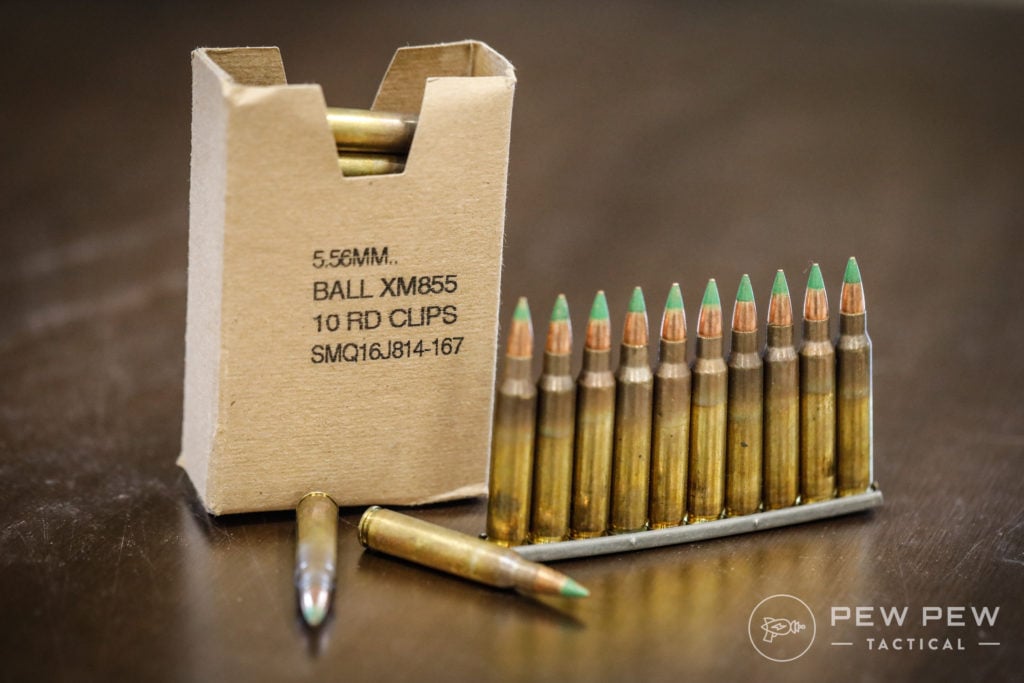
in 2015, the ATF attempted to ban Green Tips for civilians arguing that Green Tips violated the 1985 Law Enforcement Officers Protection Act.
Essentially, the ATF’s standpoint was that these rounds qualified as an “armor-piercing” round and, with AR-15 pistols on the rise, anyone would have the capability to shoot armor-piercing rounds from a concealable platform.
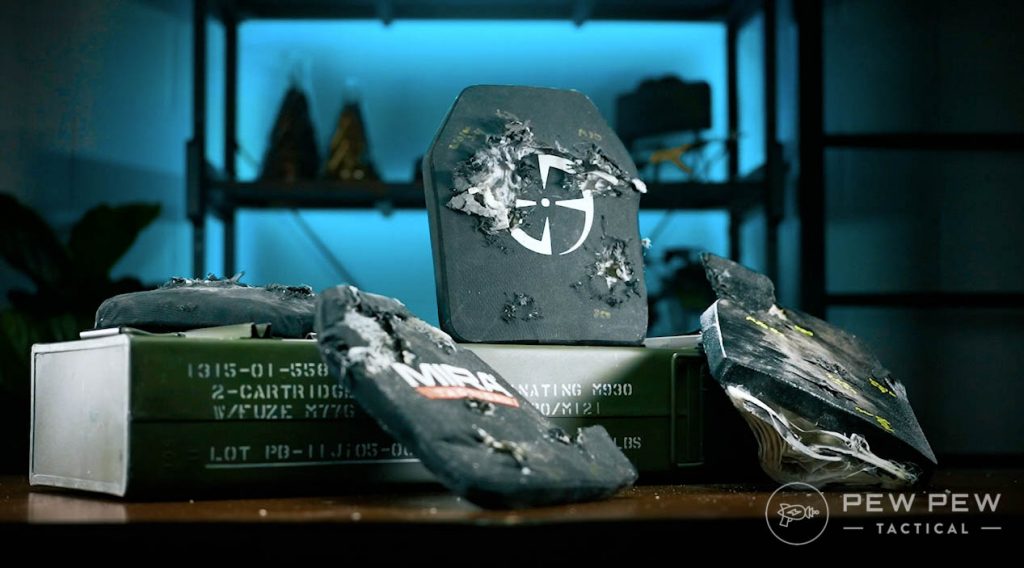
However:
- M855 isn’t considered armor-piercing by any U.S. military branch
- Doesn’t meet the federal definition of an armor-piercing round
- Has never been linked to a single instance of a law enforcement officer being shot through their armor
- The Fraternal Order of Police said M855 isn’t a threat to LEOs
- The NRA has stated that M855 can’t penetrate Level III body armor
- The military found that M855 performs poorly when shot out of a short-barreled rifle (like an AR-15 pistol), and in some cases, couldn’t even penetrate a car windshield.
- And Green Tips aren’t even on the ATF list of what constitutes an armor-piercing round
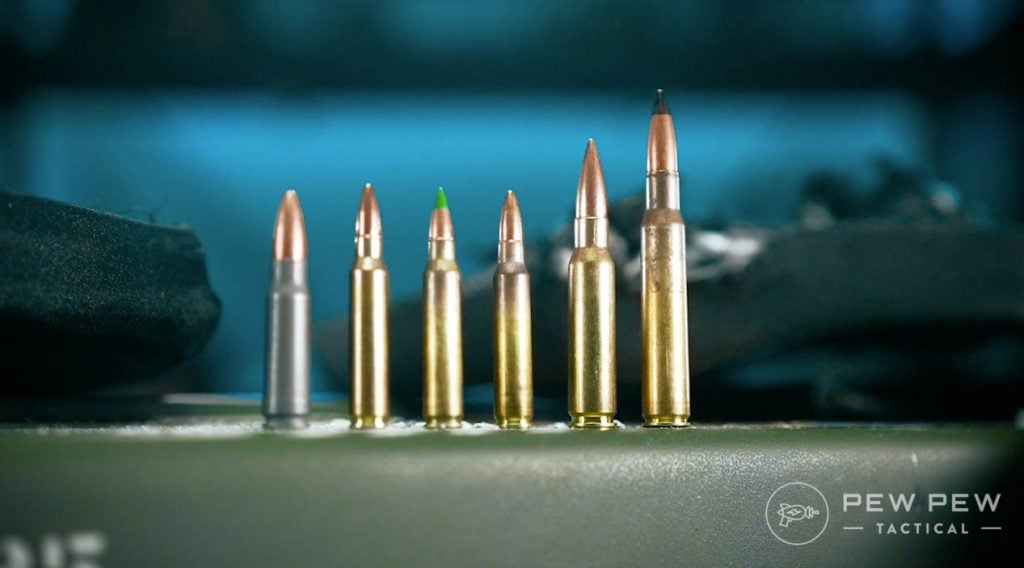
According to 18 USC 921(a)(17), the term “armor piercing ammunition” means:
- A projectile or projectile core which may be used in a handgun and which is constructed entirely (excluding the presence of traces of other substances) from one or a combination of tungsten alloys, steel, iron, brass, bronze, beryllium copper, or depleted uranium; or
- A full jacketed projectile larger than .22 caliber designed and intended for use in a handgun and whose jacket has a weight of more than 25 percent of the total weight of the projectile.
Green Tips are primarily lead and don’t feature a full-metal jacket greater than 25% of its total weight. Even according to the ATF, Green Tips aren’t armor piercing.
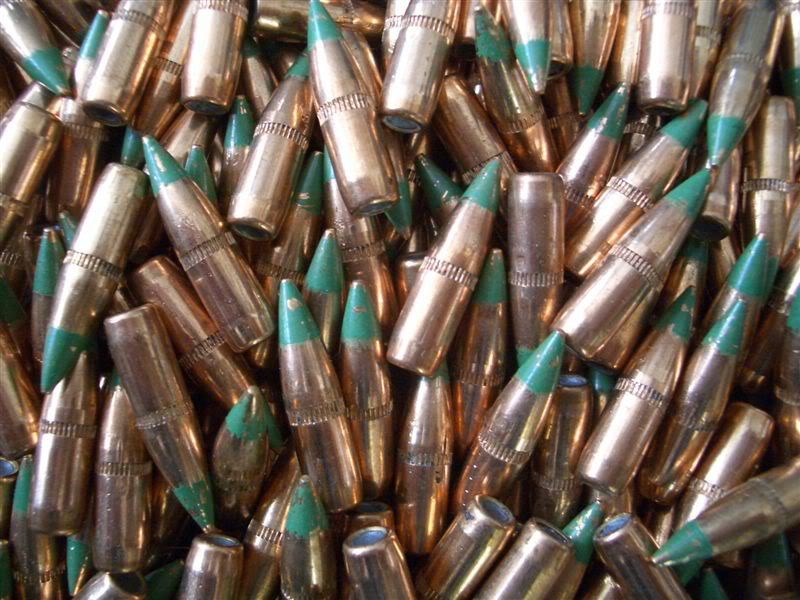
Thankfully, Green Tip ammunition is still legal for purchase within the United States. So, if you’re looking to buy some, here’s what you need to know.
For starters, between M193 and M855, M193 is best for hunting.
The reason for this? M193 offers a “softer” bullet than M855, meaning that it will fragment once it hits its target.
In turn, that leaves a huge wound cavity to boot – particularly within 100-yards.
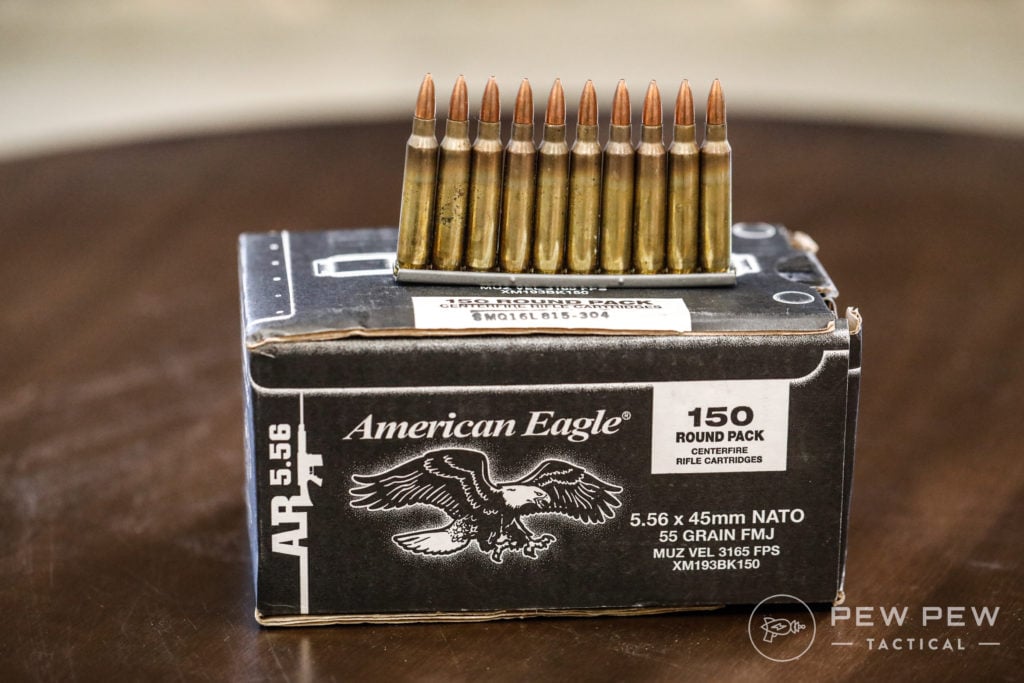
On the other hand, M855 would rip clean through it with minimal ballistic damage. However, if we’re talking about shooting beyond 300-yards, M855 would be superior to M193.
While Green Tipped ammunition isn’t armor-piercing, it most certainly does pack a punch.
Black Tips
Speaking of armor-piercing rounds…
If you find Black Tipped ammo out there (and you probably won’t), that means you’re looking at a true armor-piercing round.
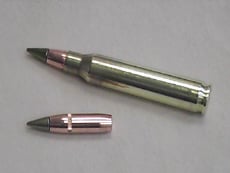
The only Black Tip ammunition still legal for American citizens that I’m aware of are old WWII surplus .30-06 rounds.
Other than that, the only people with access to armor-piercing rounds are U.S. soldiers.
That M855 we were just talking about? Armor-piercing M855A1 replaced it, and those rounds aren’t available to the public.
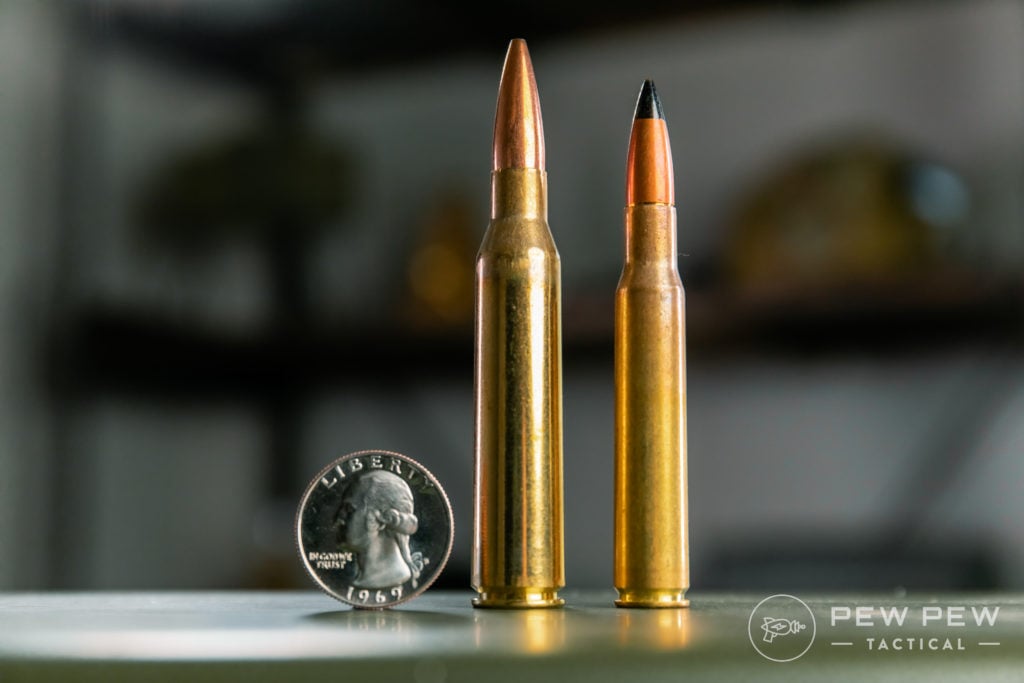
It’s a pretty sweet round, with the capability to go through the engine compartment and into the engine block of a truck at 500 yards.
The M995 is another Black Tip out there as well, but won’t run across it on your weekend flea market run either.
Blue Tips
Come upon a round with a blue tip?
Then you’re looking at an incendiary round, designed to catch things on fire.
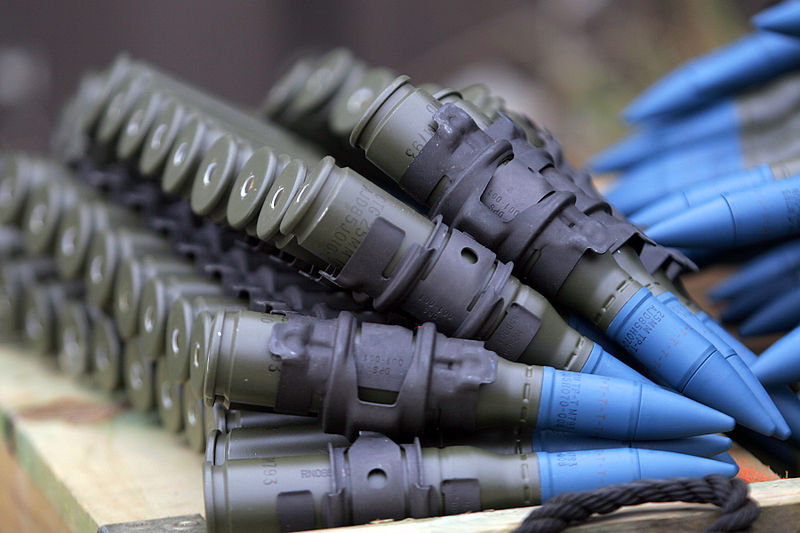
Created during WWI, it used phosphorus as the combustible material. Phosphorus burns pretty quickly though.
As a result, WWI incendiary rounds were only able to ignite material that was within roughly 350-yards.
But, with war comes improvements in weaponry. So, by WWII, that short-range combustion was rectified.
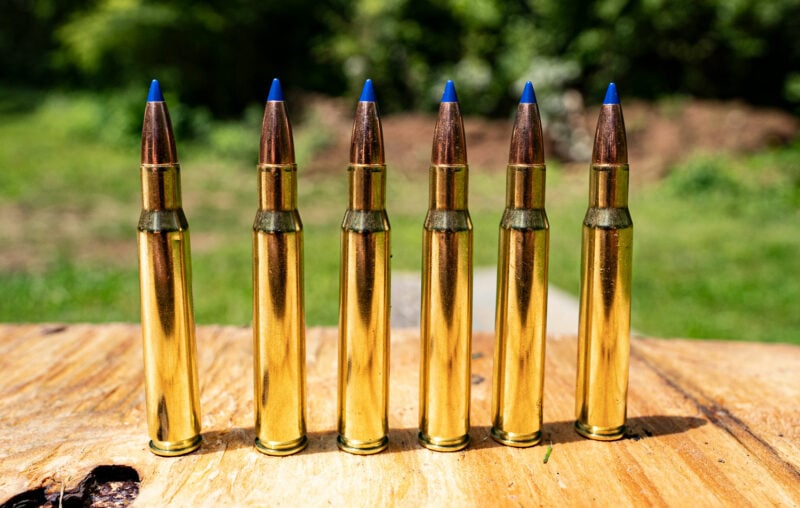
During this time, incendiary rounds really came to the forefront, used to shoot at aircraft fuel tanks.
If the round hit the fuel tank, flames would either immediately engulf the plane or send it towards the ground very rapidly.
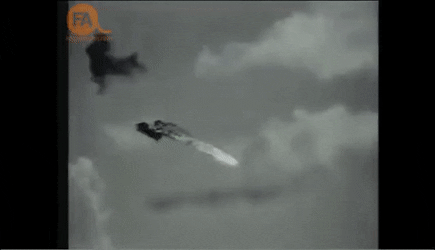
“I remember seeing a bright flash of an incendiary bullet going past my leg into the gas tank…Then a little red tongue licked out inquiringly from under the gas tank in front of my feet and became a hot little bonfire in one corner of the cockpit,” one soldier recalled.
In short, these flaming little rounds could do some serious damage.
Orange/Red Tips
Orange and Red Tipped bullets indicate tracer rounds.
While you can access these as an American citizen, you’ll jump through a lot of legal hoops to do so.
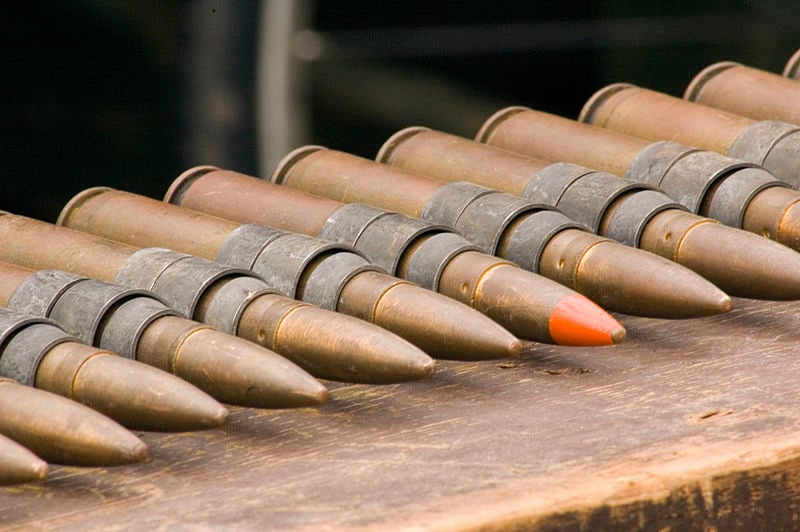
Why?
The ATF mandates that both the buyer and seller of tracer rounds possess a federal explosives license. Bummer.
First designed as “spotlight” bullets, these rounds would either create a bright flash of light or a puff of smoke once they hit their target.
However, this presented two problems.
For starters, shooting at aircraft remained just as difficult as ever and the rounds weren’t able to accomplish their purpose when shot into the sky.
The second problem arose due to The Hague Convention, which Teddy Roosevelt signed in 1907. This made it a war crime to use exploding bullets.
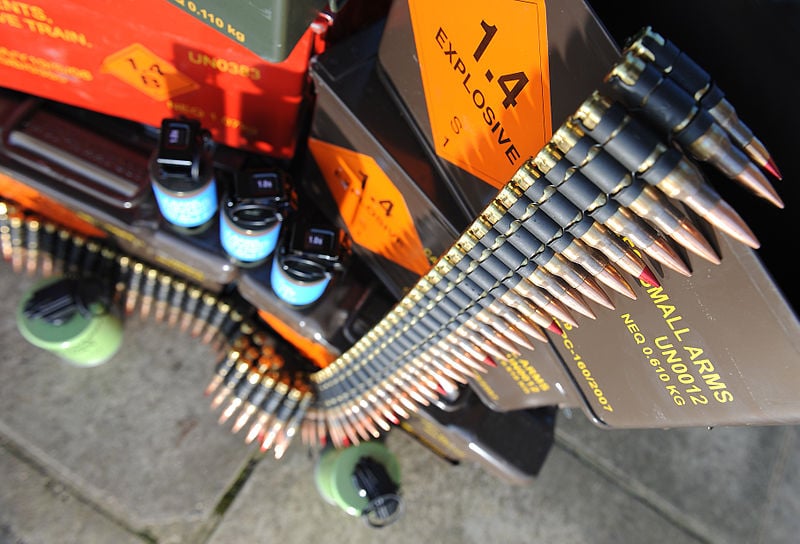
And so, it was back to the drawing board for tracer rounds.
Rounds that left a smoke trail were created in response.
But, so much of the cartridge was comprised of fuel that these ended up with a rather significant diminishment of both accuracy and power.
This problem was rectified in the UK in 1915 when contemporary tracers were born. The U.S. followed suit, creating its own version in 1917.
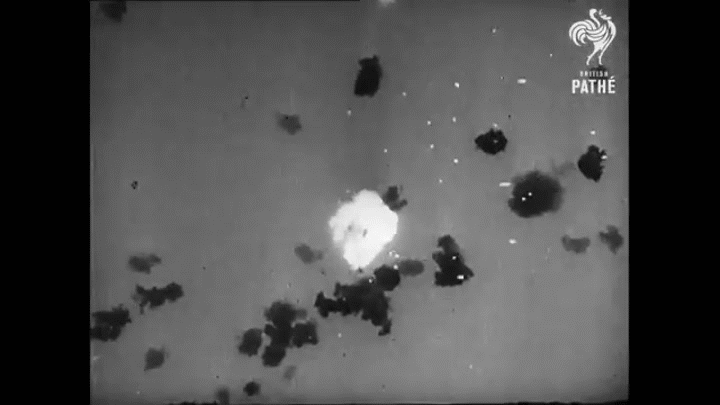
Modern tracer rounds use a pyrotechnic charge in the base — typically, a combination of magnesium, chlorine, and a strontium mixture.
When fired, the base ignites, producing a bright light.
This light allows the shooter to determine where rounds head — a pretty useful feature in warfare for a number of different situations.
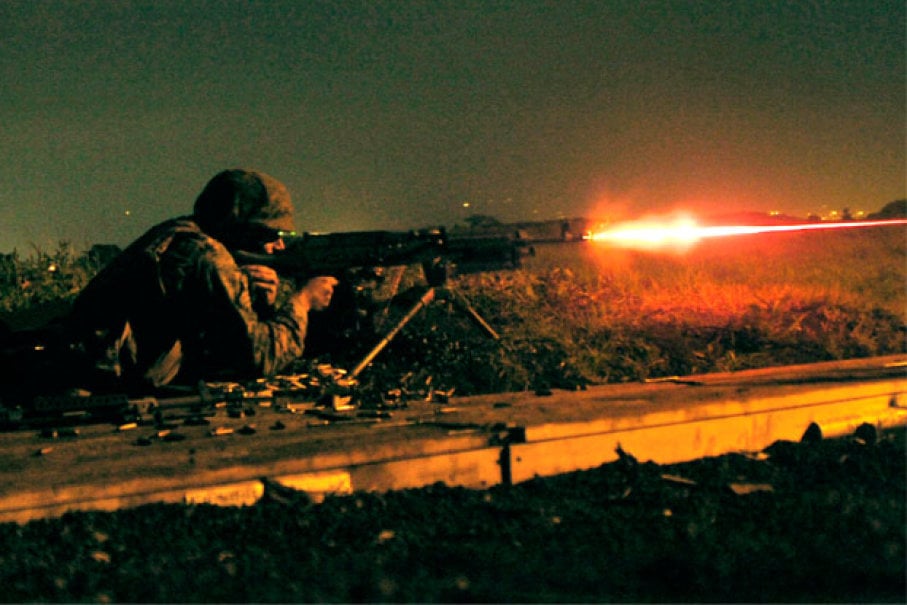
Obviously, with tracer rounds, the shooter can make aiming corrections to ensure hits on the target.
Platoon and squad leaders often use tracer rounds as well. By filling up an entire magazine full of tracers, these leaders can mark targets for their soldiers to concentrate fire on.
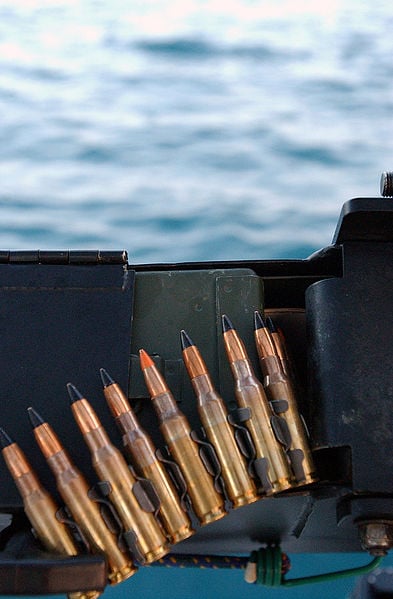
And if you’re worried about running out of bullets unexpectedly in a firefight, loading a tracer round 2 to 3 rounds from the bottom of your mag gives you a better idea when you almost reach empty.
There are three different types of tracers: bright, subdued, and dim.
Bright tracer rounds are probably what you’re most familiar with. These are the stereotypical tracer rounds that make your weapon look like something from a Star Wars movie.

However, sometimes it’s not a good idea to be broadcasting your position to all of the bad guys out there.
If that’s the case, then grab subdued tracers. These rounds ignite about 100-yards after they’ve been fired. This helps the shooter disguise his location.
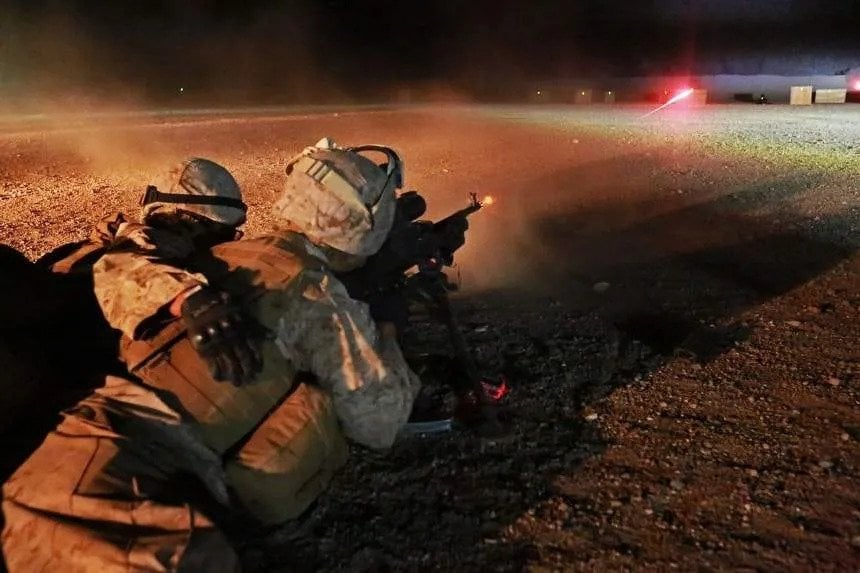
But what about night operations with night vision equipment?
When using such equipment, bright lights can seriously hamper your operations. In some cases, it can even end up damaging your equipment.
This is where dim tracer rounds or even infrared tracer rounds come into play, used with little risk.
And if you’re looking for something that will start a fire…tracer rounds are incendiary as well.
Polymer Tips
Polymer Tip bullets can come in just about any color scheme you can imagine.
While some companies do use different colors of polymer for different caliber rounds, for the most part, the coloring is completely random.
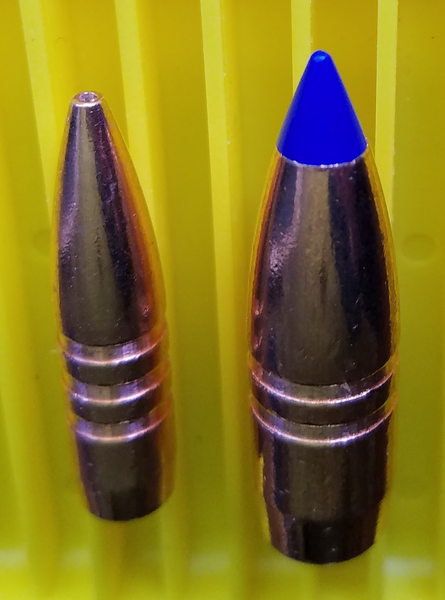
What makes polymer-tipped bullets of interest to shooters?
So glad you asked…
Tube-Fed Magazines
Lever-action .30-30 fans (and John Wayne wannabes) know that all of your cartridges reside in a tube-fed magazine.
The only problem with this is that the nose of one bullet is resting against the primer of the round in front of it.

This is why tube-fed rifles, such as the .30-30, utilize round-nosed bullets.
Using tube-fed magazines with metal pointy bullets could very easily lead to an accidental misfire within the magazine should the gun jostle hard enough.
That’s no good.
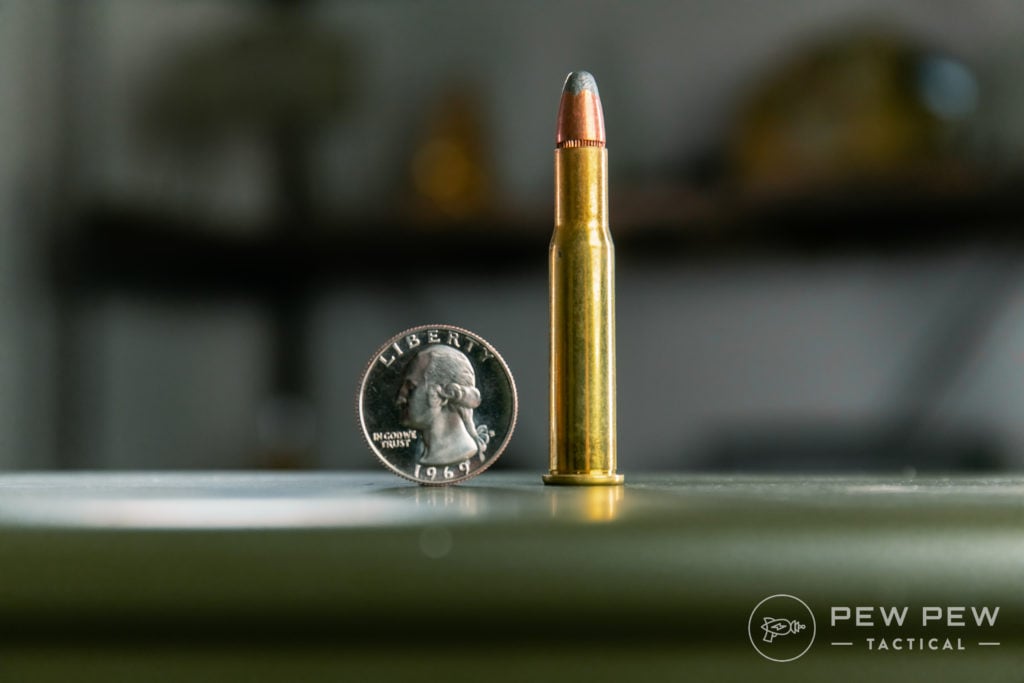
However, this comes at a cost, and that’s accuracy and stopping power.
A round-nosed bullet isn’t anywhere near as aerodynamic as a pointy bullet.
As such, it offers less velocity when it hits its target. Not to mention, it experiences movement courtesy of wind resistance.
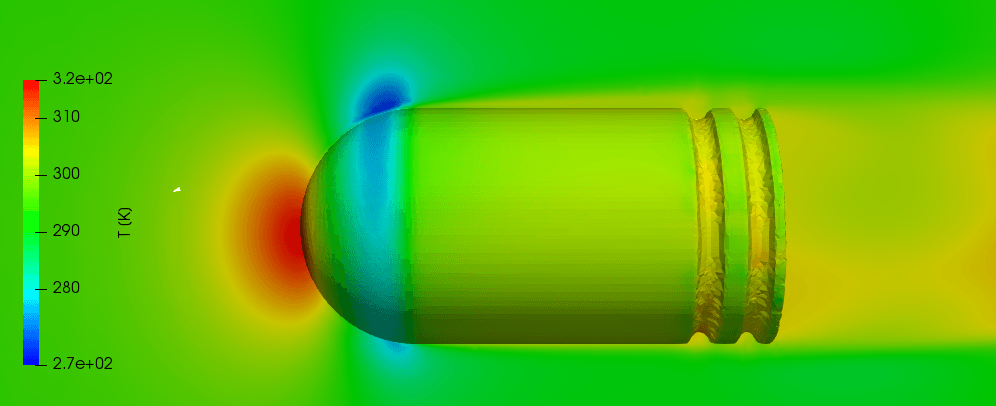
If you’re looking for a round with better accuracy and stopping power for your 30-30, then polymer-tipped bullets are the ticket.
Because the tips are soft, you don’t have to worry about accidentally igniting a series of misfires within your magazine.
Handgun Jams
You like shooting hollow points out of your handgun, but your pistol seems to give you grief for doing so.
Well, it’s a relatively common problem caused by the flat nose of the bullet, leading to the bullet catching on something as it’s loaded into the gun.
The end result? A jam.
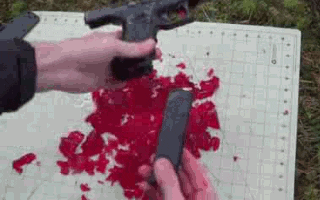
If you’re in a self-defense type of situation, this could very lead to a deadly problem. However, Poly Tip bullets prevent this.
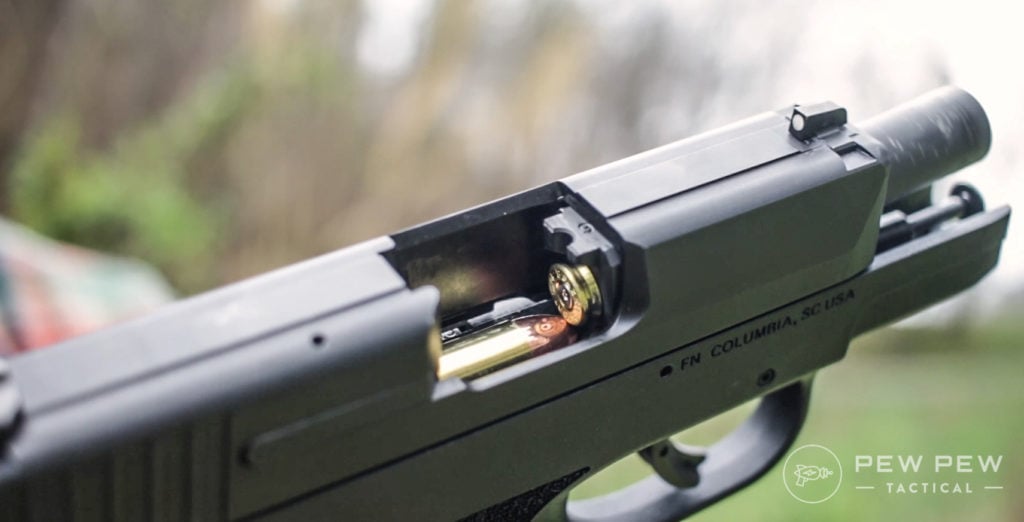
Though you’re still firing a hollow point round, the polymer tip gives the bullet the rounded shape necessary to prevent catching on internal parts of the weapon.
The end result is a hollow point round with less risk of jamming.
Aerodynamics and Expansion
Another appeal to Polymer Tipped bullets is the better aerodynamics they get over regular hollow points.
It’s the difference between a flat-faced semi-truck going down the highway and a Corvette. Perhaps that’s an iffy analogy, but we’ll roll with it.
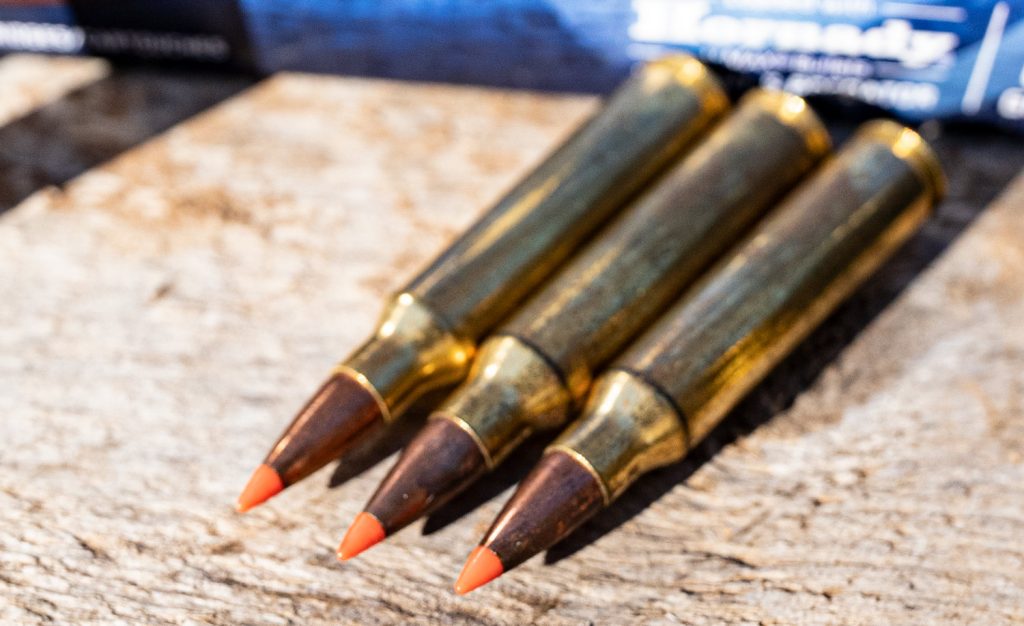
A flat-headed bullet inherently has more wind resistance than a pointy bullet.
However, there are still situations where a hollow point round proves more useful than ball ammunition.
A Polymer Tip bullet bridges that gap. You end up with a flatter and more accurate trajectory than traditional hollow-point ammunition — just what we want, if we’re handgun hunting.
And when the round actually hits its target, there are even further benefits.
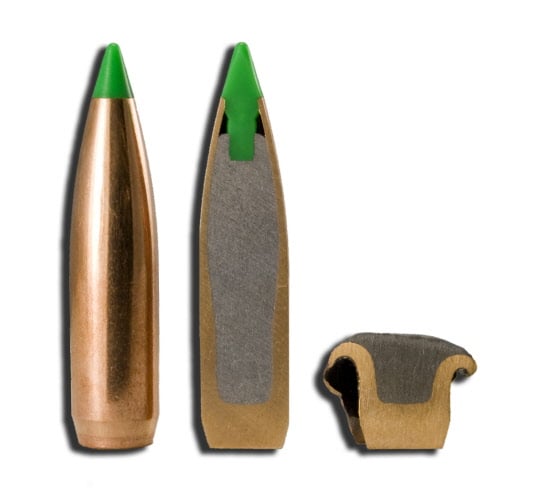
The polymer gets driven into the recessed tip of the bullet, causing the bullet to expand wider and wider. And this means it goes deeper into the target.
If you’re looking for a round that will enter a soft tissue target and stay there with minimal risk of over-penetration (e.g. apartment defense), this may be something to consider.
Conclusion
Tipped bullets are everywhere, but before you put one in your gun, you need to know what it’s going to do.
Putting an incendiary round into your weapon in the middle of the dry season where you live is probably not a good idea. Likewise, shooting green tips at your local gun range will likely lead to you being kicked out.
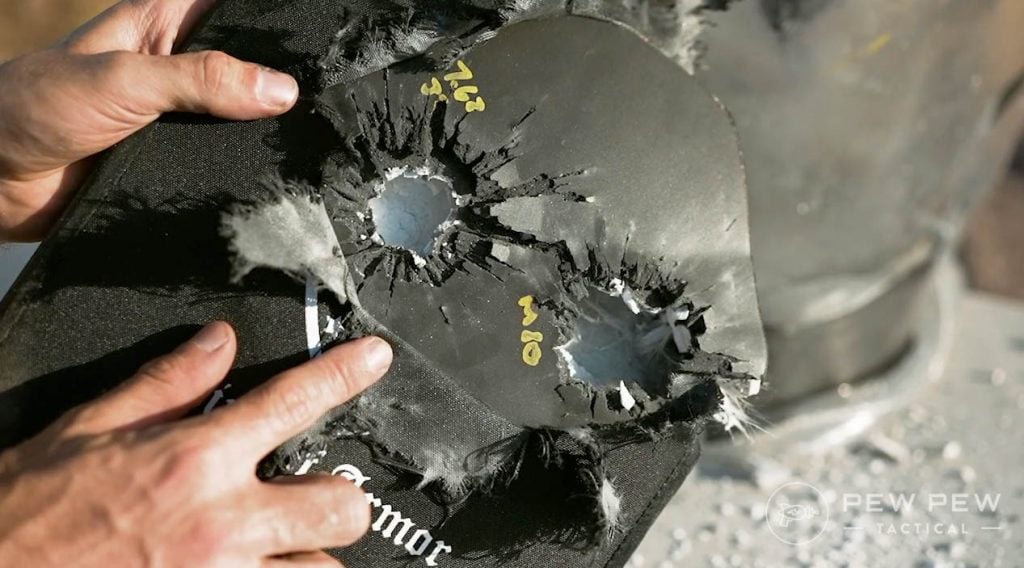
That’s not to say these types of bullets aren’t beneficial, but you have to know the purpose of a tool before you use it or you can very easily end up in some trouble.
Have you had the opportunity to use any of what we’ve talked about? If so, let us know in the comments below! Check out some other weird and crazy ammo for more fun, or learn about the best lead-free ammo for hunting!

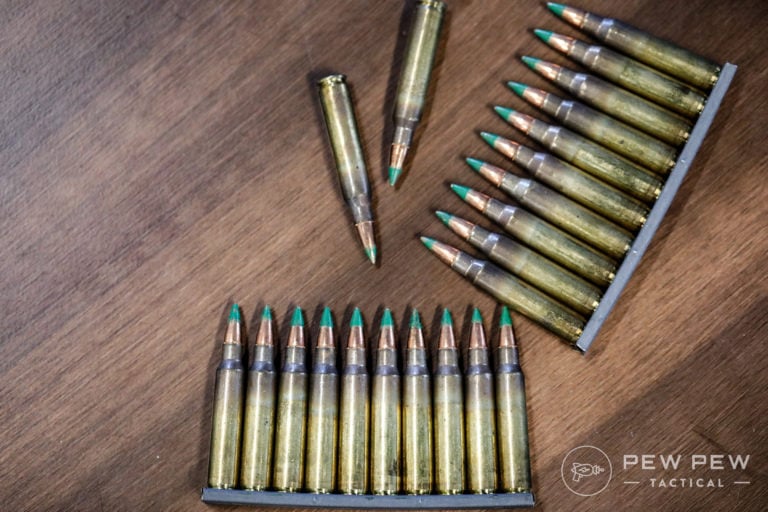







20 Leave a Reply
You do NOT need a license to buy tracer rounds. Get your facts right, author. You're spreading bad info to the shooting community.
Not sure about his comments on tracer ammo. I have bought quite a bit of it for my AR, and just got done ordering some for my 30-06.
Palmetto State armory has black tipped ammo that is not armor piercing The AAC saber bullet. It's just a bit heavier than normal 75 grains and it's designed for self-defense use not armor piercing.
So why would anyone be kicked out of a range for using green tips? You just made a huge case for using them in PRS competitions at 500+ yards.
They damage the steel backstops of indoor ranges. Outdoor ranges with earthen backstops probably don't care.
M855A1 are available here. Online
maxammodepot
Good info for Americans only -8.9
Well, this certainly has the information I was looking for, thanks. The one thing I would like to know is if it's legal to put a tungsten ballistic tip in place of the plastic tip. I would not want it to initiate expansion until after it began to enter the target. I'm seeing some misinterpretation that ballistic tips cause expansion before penetration, and this is not the case (get it?) Velocity and mass are everything when it comes to expansion. Not enough umph and the bullet will not expand. Too much momentum, and it will fragment too soon to be effective.
The title read tipped bullets and what you need to know guide. There really was no guide and did not explain tip very well maybe for somebody that didn't know anything about tips at all you did okay as far as that goes but there s so much you left out. I give this 3.75 stars out of 5 stars
I can see what you mean. At first glance before clicking on the article I though it ment different tip designed not really the color of the tip. IE how some pistol rounds are flat headed, hollow, poly, ripp rounds. But for what it was I guess it wasn't bad. I'd give me more a 4.25 for not specifying the the colors of just the tip.... I had to...
That's generous.... 2.8
So a polymer filled hollow point will cause the bullet to expand more and more, which causes more drag slowing the bullet down, yet allowing it to go deeper into the target, while at the same time reducing the chances of over penetration? That doesn’t make sense.
Yes it does read it again...
NO, read again, it doesn't make sense! It it expands more, it will slow down and not penetrate as far, not further!
I think the key is in reading the sentence before which says, "when the round actually hits the target"......
Makes sense to me.
The blue 25mm rounds are NOT incendiaries! US military color code denotes blue as practice rounds!
Bro that's what I was thinking. Those are Bradley training 25mm ask me how I know lol. They are the simulated HE ones the AP plastic part that covers the sabot is still rather pointy looking. You gotta remember if this author is the same as most of the articles he was a marine. I don't think they have vehicles minus their lamborfeeties.
Thank you. I learned a great deal.
Nothing about Silver Tip API?
I have a bandolier of 30-06 black tips for my Garand , for the better to have it and not need it than need it and not have it scenario ……